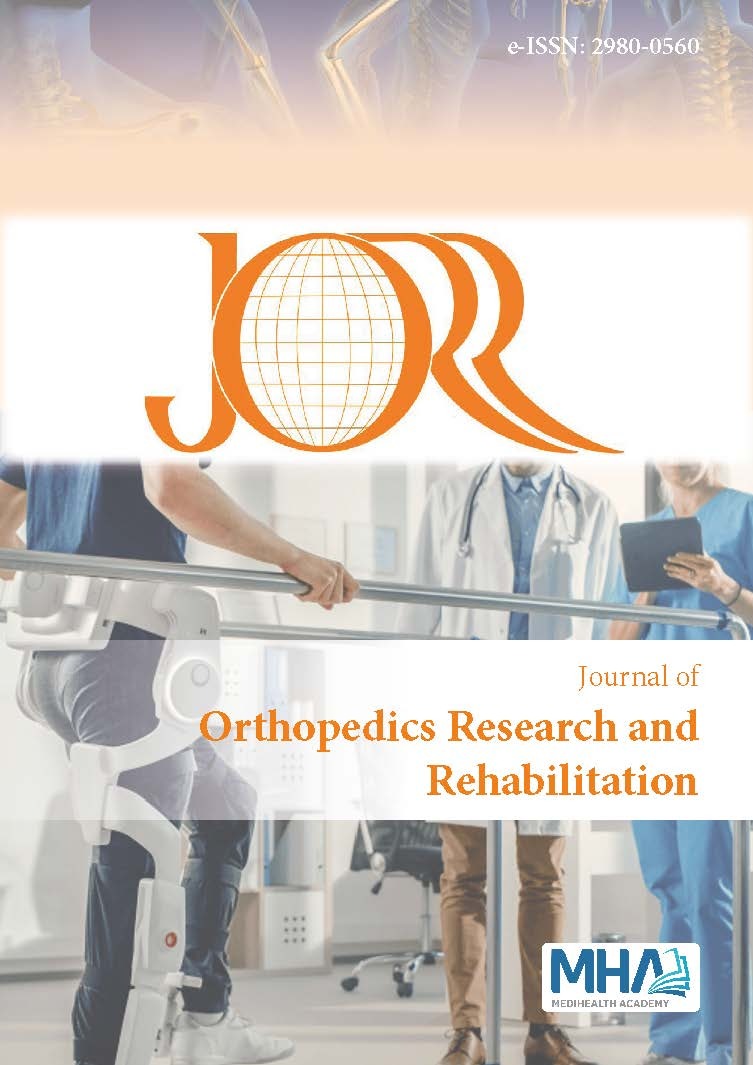1. Güven Z. Artroplasti rehabilitasyonu. In: Oğuz H, ed. TıbbiRehabilitasyon. 3rd ed. Nobel Tıp Kitapevi: 2015:679-700.
2. Jaramillo CA. Geriatrics. In: Eapen BC, Johns JS, Kowalske K, LewHL, Miller MA, Worsowicz G, eds. Braddom’s Physical Medicine andRehabilitation. 6th ed. Elsevier: 2020:594-605.
3. Berkan F. Artroplasti rehabilitasyonu. In: Beyazova M, Kutsal YG, eds.Fiziksel Tıp ve Rehabilitasyon. 3rd ed. Güneş Tıp Kitapevi: 2016:1329-1362.
4. Han HS, Lee MC. Cementing technique affects the rate of femoralcomponent loosening after high flexion total knee arthroplasty. Knee.2017;24(6):1435-1441.
5. Nam D, Kopinski JE, Meyer Z, Rames RD, Nunley RM, BarrackRL. Perioperative and early postoperative comparison of a moderncemented and cementless total knee arthroplasty of the same design. JArthroplasty. 2017;32(7):2151-21555.
6. Raya R, Joe GO, Gerber LH. Chapter 32: Rheumatic Diseases. In:Frontera WR, DeLisa JA, Gans BM, Robinson LR, Bockenek W, ChaeJ, eds. DeLisa’s Physical Medicine and Rehabilitation: Principles andPractice. 6th ed. Lippincott Williams & Wilkins: 2019:1880-1998.
7. Lei YT, Xie JW, Huang Q, Huang W, Pei FX. Benefits of early ambulationwithin 24 h after total knee arthroplasty: a multicenter retrospectivecohort study in China. Mil Med Res. 2021;8(1):17.
8. Harvey LA, Brosseau L, Herbert RD. Continuous passive motionfollowing total knee arthroplasty in people with arthritis. CochraneDatabase Syst Rev. 2014;2014(2):CD004260.
9. Yue C, Zhang X, Zhu Y, Jia Y, Wang H, Liu Y. Systematic review of threeelectrical stimulation techniques for rehabilitation after total kneearthroplasty. J Arthroplasty. 2018;33(7):2330-2337.
10. James DA, Nigrini CM. Chapter 63: Total Knee Replacement Protocol.In: Giangarra CE, Manske RC, BrotzmanSB, eds. Clinical OrthopaedicRehabilitation A Team Approach. 4th ed. Elsevier: 2018:417-420.
11. Bryan S, Goldsmith LJ, Davis JC, et al. Revisiting patient satisfactionfollowing total knee arthroplasty: a longitudinal observational study.BMC Musculoskelet Disord. 2018;19(1):423.
12. McElroy K, Innerfield C, Cuccurullo S, Rossi RP. Joint Replacement.In: Maitin IB, Cruz E, eds. Current Diagnosis & Treatment PhysicalMedicine & Rehabilitation. McGraw Hill: 2014:547-560.
13. Blanco JF, Díaz A, Melchor FR, da Casa C, Pescador D. Risk factors forperiprosthetic joint infection after total knee arthroplasty. Arch OrthopTrauma Surg. 2020;140(2):239-245.
14. Ma LL, Yu XR, Weng XS, et al. Possible risk factors for severecomplications occurring after primary total knee arthroplasty. ChinMed Sci J. 2022;37(4):303-308.
15. Putman S, Boureau F, Girard J, Migaud H, Pasquier G. Patellarcomplications after total knee arthroplasty. Orthop Traumatol Surg Res.2019;105(1):S43-S51.
16. Vajapey SP, Blackwell RE, Maki AJ, Miller TL. Treatment of extensortendon disruption after total knee arthroplasty: a systematic review. JArthroplasty. 2019;34(6):1279-1286.
17. Garner MR, Gausden E, Berkes MB, Nguyen JT, Lorich DG. Extensormechanism injuries of the knee: demographic characteristics andcomorbidities from a review of 726 patient records. J Bone Joint SurgAm. 2015;97(19):1592-1596.
18. Summers S, Mohile N, McNamara C, Osman B, Gebhard R, HernandezVH. Analgesia in total knee arthroplasty current concept review. J BoneJoint Surg Am. 2020;102(8):719-727.
19. Goesling J, Moser SE, Zaidi B, et al. Trends and predictors of opioid usefollowing total knee and total hip arthroplasty. Pain. 2016;157(6):1259-1265.
20. Domenech J, Sanchis-Alfonso V, Espejo B. Changes in catastrophizingand kinesiophobia are predictive of changes in disability and painafter treatment in patients with anterior knee pain. Knee Surg SportsTraumatol Arthrosc. 2014;22(10):2295-2300.

